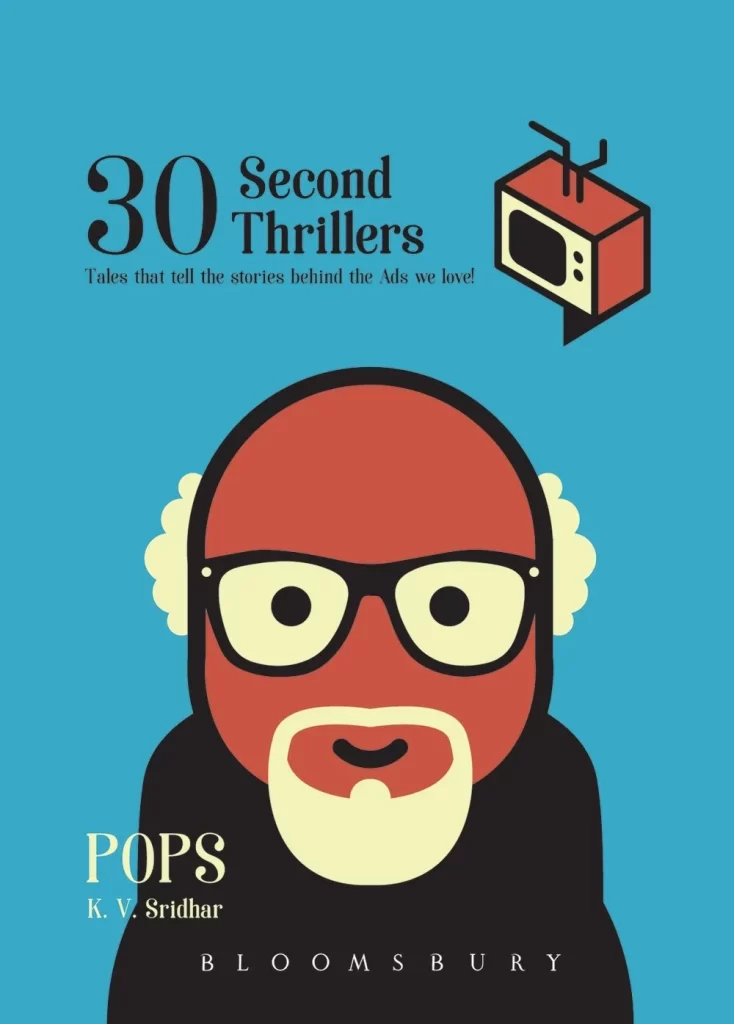Book Review: Unpacking ’30 Second Thrillers’ for Modern ROI
Let’s be clear about one thing in advertising: It’s not about selling; it’s about an indelible human connection. The difference between a forgotten campaign and an iconic one is the commitment to storytelling. If you’ve ever wanted the blueprint to campaigns that etch themselves into the national psyche, then K.V. Sridhar‘s (Pops’s) 30 Second Thrillers is required reading.
This book is a masterclass—a strategic deep-dive into the minds that architected India’s most successful, culture-defining ad campaigns. It confirms a simple truth we champion at Intent Tale:
“Great advertising isn’t just about selling a product, it’s about telling a story that sticks and delivers on the brand promise.”
For the entrepreneur building a legacy, the marketer demanding measurable impact, or the creative pro seeking strategic direction, this is gold. Let’s dissect the strategic takeaways.

The Unspoken Strategy Behind Unforgettable Campaigns
When you recall ads that hit hard: the Fevicol saga of unbreakable bonds, the pure delight of Cadbury Dairy Milk, or Amul’s immediate, witty topicality, you are not remembering a product. You are remembering a powerful story that resonated with millions because it felt authentically human.
The real value in 30 Second Thrillers is the access it grants to the strategic challenges, the constraints, and the “aha!” breakthroughs that gave birth to these legends. It forces us to ask the right questions:
What is the single human insight that makes an ad truly unforgettable?
How did creative leaders turn a simple product feature into an emotional, high-conviction narrative?
What is the predictive metric that guarantees a campaign will live in the public mind long after the airtime ends?
The takeaway is simple:
The best advertising does not push products; it drafts stories rooted in deep, actionable human insights.
Why Creative Direction is a Strategy, Not an Expense
A major pitfall for growing brands is confusing ad spend with strategic creative direction. They mistakenly believe advertising is just volume.
Pops passionately argues that the most impactful ads connect emotionally first, establishing an essential brand relationship long before any transaction occurs. The campaigns that endure rarely dump statistics; they create moments that make you laugh, feel inspired, or deeply relate.
This is how iconic advertising storytelling becomes the engine for building a powerful, lasting brand presence and scalable growth.
Emotional ROI: Nostalgia, humor, and inspiration consistently deliver higher long-term Customer Lifetime Value (CLV) than feature-heavy sales pitches.
Deep Loyalty: Raw, authentic emotions forge lasting customer loyalty that resists competitive pricing wars.
Relatability Scales: People buy into personal, relatable narratives that affirm their identity, not generic, polished corporate pitches.
Great brands don’t just sell; they build genuine, high-trust relationships through disciplined storytelling.
Applying the Lessons: From Industry Titan to Your Digital Funnel
Beyond captivating personal anecdotes, the book delivers strategic mentorship from giants like Piyush Pandey, Prasoon Joshi, and R. Balki. Their shared wisdom offers a tangible roadmap for your strategy:
Avoid Blunders: Learn to preemptively identify common advertising mistakes that waste resources and erode trust.
Unlock Secrets: Understand the strategic process behind campaigns that not only win awards but deliver unprecedented market penetration.
Future-Proofing: Grasp the strategic evolution of advertising—from classic print to today’s AI-driven, full-funnel digital campaigns.
To truly excel, we must learn from the titans to avoid reinventing their early missteps.
Our Framework: Turning Creative Constraints into Competitive Edge
Here is a cool revelation that defines our approach at Intent Tale: The most groundbreaking campaigns are often born not from unlimited budgets, but from creative constraints. Pops perfectly illustrates this by showing how tight deadlines, shoestring budgets, or tricky guidelines force the kind of outside-the-box thinking that yields legendary results.
Amul’s iconic billboards turned limited space and quick deadlines into pure, timely comedic gold.
Fevicol took a simple commodity and used relentless, constrained storytelling to turn it into a cultural icon.
Constraints aren’t obstacles. They are the ultimate fuel for innovation, forcing strategic clarity.
If you’re leading a marketing team or a startup founder, this book is packed with the leadership insights required to cultivate a culture where calculated risk-taking and strategic collaboration thrive. Great leaders don’t just command creativity; they architect the environment for it to succeed.
Final Verdict: The Core of Advertising Never Changes
While 30 Second Thrillers celebrates the past, Pops also strategically forecasts the future, the rise of AI-driven personalization and the necessary marriage of data and high-impact storytelling.

The most reassuring insight is this: Platforms evolve, but human emotions stick around. Great storytelling will simply never go out of style because the emotional triggers that drive action remain constant.
Ready to Turn Your Brand Story into Scalable Revenue?
If your current marketing is failing to connect emotionally or deliver measurable results, you have a creative strategy gap.
We turn creative genius into predictable revenue. Partner with Intent Tale for Creative Direction that blends iconic storytelling lessons with full-funnel digital execution.
CLAIM YOUR FREE G.R.O.W.T.H. DISCOVERY AUDIT to map out your brand’s high-conviction story and guaranteed ROI.
Frequently Asked Questions on iconic advertising storytelling
What is the core lesson from K.V. Sridhar’s “30 Second Thrillers” for modern advertising?
The core lesson is that successful advertising is about creating an indelible human connection and telling a story that sticks while delivering on the brand promise.
What is the “Unspoken Strategy” behind iconic Indian campaigns?
The strategy is rooted in deep, actionable human insights. Iconic ads resonate with millions because they feel authentically human, not forced or fabricated.
Why is “Creative Direction” a strategy and not just an expense?
Creative Direction is strategic because emotionally connective ads drive higher long-term Customer Lifetime Value (CLV) and build deep, defensible loyalty.
How does the book’s wisdom apply to today’s full-funnel digital marketing?
Platforms evolve, but human emotion, the real trigger for action, remains constant. The book shows how to future-proof strategy by combining data with high-impact storytelling.
How does Intent Tale’s framework view creative constraints?
Intent Tale sees constraints as fuel for innovation. Limitations force clarity, focus, and unconventional thinking, often resulting in the most breakthrough campaigns.
















